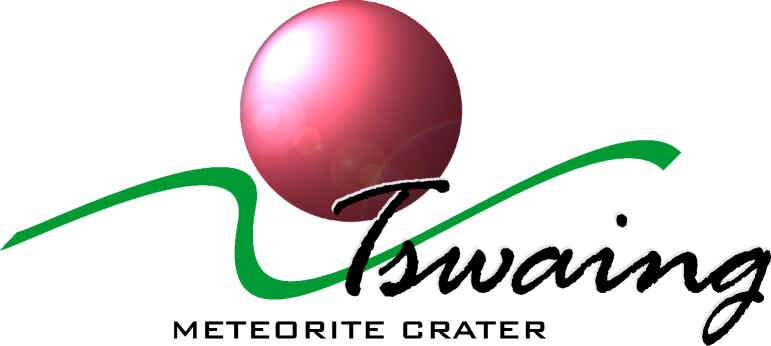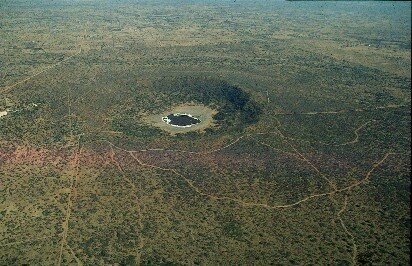|
Aerial view of crater (courtesy Department of Geology, University of the Witwatersrand) |
 |
||||||||||||||||||||||||
|
The Controversy |
|||||||||||||||||||||||||
|
|
For much of the 20th century a controversy raged over the origin of the Tswaing Crater.
Two genetic hypotheses were proposed: a volcanic, and a meteorite impact origin. The traveller-writer F Jeppe first described the Tswaing Crater as a unique feature of volcanic origin in 1868. Percy Wagner was the first geologist who studied the crater in detail and published a book about it in 1922. He concluded that the crater must be the result of a volcanic event of some sort, a finding that was based mainly on the presence of various volcanic rocks occurring along the crater rim. In contrast, the German geologist Rohleder, in 1933, was the first to suggest an impact origin for the crater, comparing it to the Steinheim Basin in southern Germany, which since then has also been confirmed as a meteorite impact crater. In 1946 the eminent meteorite researcher, F C Leonard, published the first-ever list of possible meteorite craters on Earth and included Tswaing. After that, individual researchers repeatedly discussed this possibility, but never produced unambiguous evidence in support of the impact hypothesis. |
||||||||||||||||||||||||
| (Source: REIMOLD, W U, BRANDT, D, DE JONG, R C, HANCOX, J, 1999, Tswaing Meteorite Crater. An introduction to the natural and cultural history of the Tswaing region including a description of the hiking trail. Popular Geoscience Series 1. Pretoria: Council for Geoscience. Available at the Council for Geoscience, Pretoria, South Africa) | |||||||||||||||||||||||||
| All intellectual property rights, including but not limited to copyright and trademarks, vested in the material contained on the NFI website is held by the NFI and may not be copied, reproduced, adapted, published or distributed in any form whatsoever without the prior written consent of the responsible person at the NFI. | |||||||||||||||||||||||||
